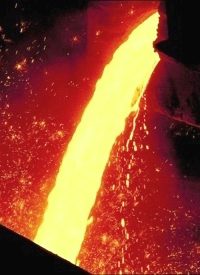
While the mainstream media have jumped at the opportunity to report on possible nuclear meltdowns in Japan, alerting Americans on the west coast to beware potential radiation (and are also likely to use the opportunity to push an anti-nuclear energy agenda), they have wholly ignored the more critical impending meltdown: that of the Japanese bond market, which would have a severe impact on the American market.
Professor Peter Bernholz of the University of Basel — author of Monetary Regimes and Inflation — explains the historical progress of inflation resulting from money creation, as is being done in both Japan and the United States:
Hyperinflations are always caused by public budget deficits which are largely financed by money creation. The figures demonstrate clearly that deficits amounting to 40 percent or more of expenditures cannot be maintained. They lead to high inflation and hyperinflations.
The big difference between Japan or the United States and countries that have experienced hyperinflations is that the central banks are not monetizing most of the deficit. Hyperinflations are not caused by aggressive central banks. They are caused by irresponsible and profligate legislatures that spend far beyond their means and by accommodative central banks that lend a helping hand to governments.
A government must pay down its liabilities with currency already in circulation or else finance deficits by issuing new bonds and selling them to the public or to their central bank to acquire the necessary money.
Unfortunately, both Japan and the United States are opting instead to create more money.
Charles Payne of the Fox Business Network indicates,
The Bank of Japan is pumping $180 billion into the Japanese economy that will keep the Yen under pressure while serious demands for funds to rebuild are going to pressure the Yen higher.” Payne contends that Japan will be “loath to sell U.S. Treasuries because it doesn’t want the American dollar to weaken.
Unfortunately, Japan’s economic woes could impact the economic stability of the United States, Payne observes. “Japan has the most debt in the world … no natural resources and has flooded its economy with money so it would be the most vulnerable to hyperinflation of any country on the planet. [This] could force Japan to sell treasuries and that might force the [Federal Reserve] to go with [quantitative easing] and continue to lower the dollar and swell it.”
London’s Marketwatch notes of Japan’s currency: “The yen retreated versus major rivals in choppy trade on Monday, as the Bank of Japan provided a massive dose of liquidity and voted to further loosen its monetary policy in the wake of last week’s devastating earthquake and tsunami.”
Adding to this is Steve Moore of the Wall Street Journal: “The Yen is falling as the Japan economy gets creamed by the earthquake. The impact of the earthquake is negative as Japan rebuilds and trade with Japan is curtailed.”
On January 28, 2010, Business Insider predicted Japan’s current economic crisis and its impact on the dollar. According to the publication, Japan should have exploded into hyper-inflation years ago, but held off this long. Japan may not be able to continue to sustain itself against hyperinflation much longer, however, and that can unfortunately affect the United States, as it depends on Japan to fund its own debt.
Dylan Grice of the Société Générale (a major European financial services company) notes:
As Japan’s retirees age and run down their wealth, Japan’s policymakers will be forced to sell assets, including U.S. Treasuries currently worth $750 billion, or Y70 trillion, eight months worth of domestic financing. At nearly 10 percent of the outstanding US Treasury stock, this might well precipitate other government funding crises.
As Japan’s population declines, more debt is needed to for funding, but fewer Japanese are available to buy it. Grice continues:
So who will fund the Japanese government’s deficit in the future? It is not likely to be the international capital markets, especially if its bonds are offering only a 1.5 percent yield. But if international investors were to demand triple that, pricing JGBs in line with international bond market peers, the game would soon be up because Japan’s current debt service already amounts to 35% of pre-bond issuance revenues.
As a result, the yen begins to depreciate and Japan becomes a risk for debt default. Japan is then faced with two choices: devalue its own currency or default on its own people.
The United States then faces the risk of losing its second largest debt buyer. That leads to a rise in U.S. bonds yields and greater pressure on the dollar, particularly as Japan would likely be selling its shares of U.S. bonds in order to protect some of its finances.
The decreased demand for U.S. bonds would in turn raise interest rates to clear up the U.S. market. Increased interest rates continue to devalue the dollar.
Americans are already beginning to see the destruction of their own bond market. Bill Gross, who runs the world’s biggest bond fund at Pacific Investment Management Company (PIMCO), has already eliminated government-related debt from its flagship fund last month after the United States projected record budget deficits.
Perhaps the mainstream media are so preoccupied with doomsday stories of nuclear meltdowns that it has overlooked news coverage that actually will affect the lives of Americans. Possibly the media are not thinking long-term: After all, what is more compelling than news coverage of mass starvation and civil unrest resulting from the collapse of the American dollar?




